2013
 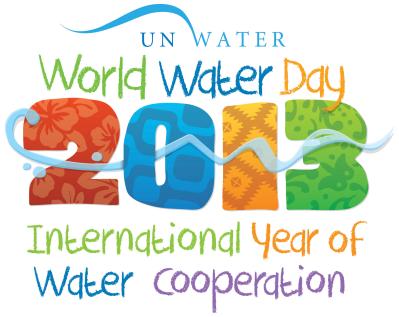 
Email: UN World Water Day 2013 Extension: UN World Water Day 2013 |
Building water partnerships for the Pacific Island Countries and Territories UN World Water Day 2013 Suva, 22 March 2013: The Pacific joins the rest of the world today in celebrating World Water Day 2013 in a spirit of cooperation and partnership. This occasion provides a moment to reflect on our precious water resources and on our role in their management and protection. 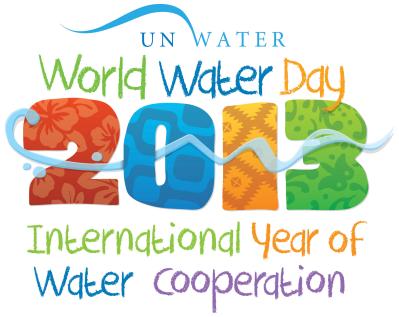 World Water Day is celebrated on 22 March each year to help focus the world’s attention on water and sanitation. This year is also the International Year of Water Cooperation –the global theme for World Water Day this year. This theme has enormous significance for the Pacific, a region where water management is a critical development issue with profound implications for economic growth, human rights, public health and the environment. To put the scale of the issue in context, it has been estimated by UNICEF and the World Health Organization (WHO) that little more than half the population of our region has access to improved drinking water and sanitation. World Water Day is celebrated on 22 March each year to help focus the world’s attention on water and sanitation. This year is also the International Year of Water Cooperation –the global theme for World Water Day this year. This theme has enormous significance for the Pacific, a region where water management is a critical development issue with profound implications for economic growth, human rights, public health and the environment. To put the scale of the issue in context, it has been estimated by UNICEF and the World Health Organization (WHO) that little more than half the population of our region has access to improved drinking water and sanitation. The Pacific theme for World Water Day is Building Water Partnerships for the Pacific Island Countries and Territories. Water issues and concerns, such as the inequitable distribution and unsustainable use of water resources, cross many boundaries, communities and levels of governance. Furthermore, resource management in the Pacific also needs to account for traditional and cultural approaches often tied closely to land and nearshore coastal area management. These approaches also extend to the management of water and sanitation. Navigating through all this can be challenging and achieving any lasting success requires effective cooperation between multiple actors across many levels. Dr Jimmie Rodgers, Director-General of the Secretariat of the Pacific Community (SPC), said that cooperation is crucial not only to ensure the sustainable and equitable distribution of water but also to foster and maintain peaceful relations within and among communities. He further reinforced the need to strengthen water partnerships already in place across the region to help secure safe water and sanitation for all. Although there are clearly major challenges ahead, SPC joins its member countries and territories in celebrating the real progress being achieved through building water partnerships. In Fiji, the collaborative work of the Nadi Basin Catchment Committee is enabling practical solutions to reduce the human impacts of flooding. This pioneering work demonstrates what can be achieved when communities, agencies and the private sector come together to face a problem that is not solvable through the efforts of individuals. Innovative technologies continue to be developed and shared across the region. Tuvalu has been particularly active in sharing the knowledge behind its tremendous success in using composting toilets to reduce both use of fresh water and pollution of groundwater lenses and coastal lagoons. In Palau, Federated States of Micronesia and Marshall Islands, government sectors are joining forces at a subregional level to raise awareness of water and sanitation issues and find solutions to common problems. Our Melanesian members too have begun collaboration to better respond to the development issue of access to safe drinking water and sanitation. With SPC’s support, the Melanesian Spearhead Group Secretariat will shortly appoint a Water and Sanitation Access Facilitator to help develop policy and practical solutions in MSG countries. At a regional level, the Pacific WASH Coalition convened by SPC continues to foster partnership with national, regional and global partners in developing effective water and sanitation improvement programmes. Forums such as the 2012 meeting of the Pacific Platform for Disaster Risk Management are bringing disaster, water management and climate change communities together to seek an integrated approach to dealing with water-related disasters and climate change. According to Rhonda Robinson, Deputy Director of the Water and Sanitation Programme at SPC, the Pacific WASH Coalition is a clear demonstration of water cooperation as it involves various stakeholders working in the field of water supply, sanitation and hygiene coming together to share lessons learnt, challenges and success stories from their activities in the Pacific region. There are many more examples of progress being made in the Pacific through the building of water partnerships ‘from ridge to reef’ and from ‘community to cabinet’. However, the challenges are great, and much more needs to be done to ensure that efforts to secure safe water and sanitation keep up with population growth and the impacts of climate change and other issues for development. Today many countries in the region are celebrating this event nationally and we are encouraged by the creative use of partnerships and cooperation to carry out this effort along with all the continuing hard work to secure access to a safe water supply and sanitation for all Pacific people. A summary of the national World Water Day activities and country contact details is attached. Download GEF Pacific IWRM Country Events (pdf) ------ CONTACT Jean-Noël Royer in Noumea (for Dr Jimmie Rodgers) – mobile: (+687) 877 063, email: jeannoelr@spc.int Rhonda Robinson, Fiji – mobile: (+679) 9934 770; email: rhondar@sopac.org Iva Koroisamanunu, Fiji – mobile: (+679) 7601 981, email: iva@sopac.org |
 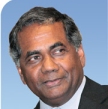 
|
Message from the Director-General on World Water Day 2013 Dear colleagues, Today marks World Water Day, a day of celebration and reflection on a precious natural resource and on our role in its management and protection. This year is also the International Year of Water Cooperation – a theme of enormous significance to the Pacific. Across the region, water management is a critical development issue with profound implications for economic growth, human rights, public health and the environment. To put the scale of the issue in context, it has been estimated by UNICEF and WHO that little more than half the population of our region has access to improved drinking water and sanitation. There are clearly major challenges ahead, but today, SPC joins its member countries and territories in celebrating the real progress being achieved through building water partnerships. In Fiji, the collaborative work of the Nadi Basin Catchment Committee is enabling practical solutions to reduce the human impacts of flooding. This pioneering work demonstrates what can be achieved when communities, agencies and the private sector come together to face a problem that is not solvable through the efforts of individuals. Innovative technologies continue to be developed and shared across the region. Tuvalu has been particularly active in sharing the knowledge behind its tremendous success in using composting toilets to reduce both use of fresh water and pollution of groundwater lenses and coastal lagoons. In Palau, Federated States of Micronesia and Marshall Islands, government sectors are joining forces at a subregional level to raise awareness of water and sanitation issues and find solutions to common problems. Our Melanesian members too have begun collaboration to better respond to the development issue of access to safe drinking water and sanitation. With SPC’s support, the Melanesian Spearhead Group Secretariat will shortly appoint a Water and Sanitation Access Facilitator to help develop policy and practical solutions in MSG countries. At a regional level, the Pacific WASH Coalition convened by SPC continues to foster partnership with national, regional and global partners in developing effective water and sanitation improvement programmes. Forums such as the 2012 meeting of the Pacific Platform for Disaster Risk Management are bringing disaster, water management and climate change communities together to seek an integrated approach to dealing with water-related disasters and climate change. There are many more examples of progress being made in the Pacific through the building of water partnerships ‘from ridge to reef’ and from ‘community to cabinet’. However the challenges are great, and much more needs to be done to ensure that efforts to secure safe water and sanitation keep up with population growth and the impacts of climate change and other issues for development. This World Water Day, we should all reflect on what fresh water means to our work areas, no matter what sector we belong to. Think about how we can join in, support and strengthen the water partnerships already being formed across the region to help secure safe water and sanitation for all. I also encourage you to take part in your local World Water Day celebrations, the details of which will be forwarded by our SOPAC Division Water and Sanitation Programme. Dr Jimmie Rodgers Director-General |
 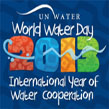 
Email: World Water Day 2013 Extension: World Water Day 2013 |
World Water Day 2013 World Water Day 2013 World Water Day 2013- Building Water Partnerships in the Pacific Island Countries and Territories  The Water & Sanitation Programme (WSP) of the Secretariat of the Pacific Community alongside our partners in the region annually celebrate World Water Day (WWD), this is marked by events, competitions, and actions on the 22nd of March. Each year a global theme is released by UN Water and this year the global theme for 2013 is the International Year of Water Cooperation. The Pacific theme for this year is in the picture below and is linked to the unique relationships, partnerships and collaboration pacific people have with respect to Water.
The WSP- Applied Geoscience & Technology division of SPC through its regional partners and collaborators are happy to showcase some of the regional events so far:
Federated States of Micronesia- Chuuk The WWD 2013 parade saw ten Chuuk Public Utilities Company (CPUC) vehicles and a Chuuk Womens Council (CWC) float escorted with assistance from the police through the streets of Weno in Chuuk.Spot talks were conducted by the Chuuk Women's Council promoting various water and wastewater topics on the radio.The WWD 2013 was showcased outside the power plant and later hoisted on a truck for the parade. Posters received by SPC have been hung at various government agencies and schools throughout Weno.  Tonga Vava'u, Tonga and the GEF IWRM project Initially a small committee was formed to ensured that the world theme of "Water Cooperation" was practised from the very beginning. Relevant Ministries, NGO's and private sectors successfully contributed to the planning and execution of Blue Ribbon week. A local theme was decided as "'Oku tau taha i he Vai'" which translates to "We are all one in Water". Community and Household Water Safety Planning Blue Ribbon week commenced with the Water Safety Planning (WSP) workshop with members from all the different districts and relevant Ministries participating. This was a continuation of a 3 day workshop conducted in October of 2012. The workshops covered WSP topics including WSP within the community, conducting water collection and storage surveys, simple water treatment methods, septic system awareness and surveys, water wise use and water quality testing. All the participants are now the "Water Champions" within the community. The participants of the WSP workshops also contributed to the development of a household water safety manual. The final edits are being completed on the manuals and will be distributed within the Neiafu districts in the coming weeks. The 'Water Champions" will run additional water safety planning meetings within the communities and distribute the water safety plans with assistance of the IWRM team. Primary School Awareness Raising All the primary schools within Neiafu were visited in the weeks leading up to Blue Ribbon Week by the IWRM team and participating NGO's. The schools were made aware of the purpose of Blue Ribbon Week and the importance of working together to look after our valuable water resources. The schools were then asked to create costumes and posters of sea animal to incorporate latest coastal project into integrated water management. Primary schools celebrated the theme through poetry and song about water. World Water Day Celebrations World Water Day started with a parade through the streets of Neiafu, Vava'u. The Parade was lead by a local high school marching band, followed by the primary school students dresses up as sea animals and holding their drawings and posters. This was followed by a IWRM float presenting Miss Water Vava'u and then by the Tonga Water Board float decorated by the local women's groups. The parade ended at the hall in which local NGO's, women's groups and ministries set up exhibitions and games and water awareness materials. 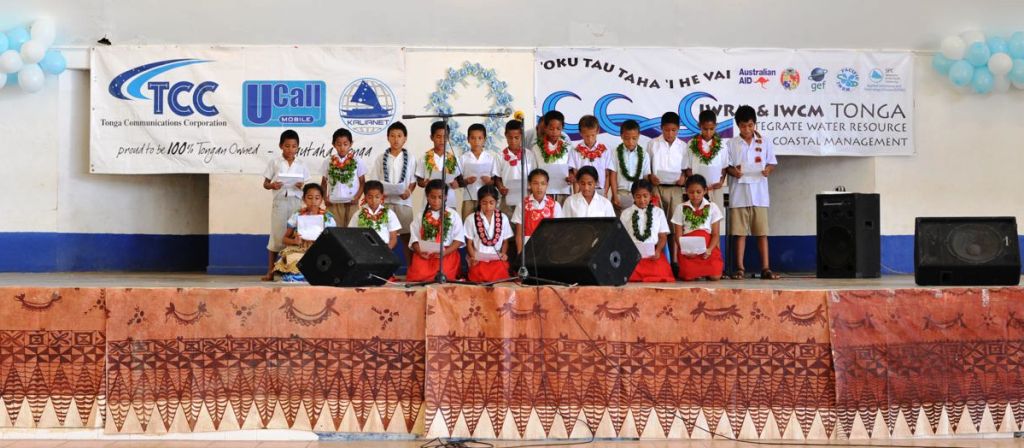 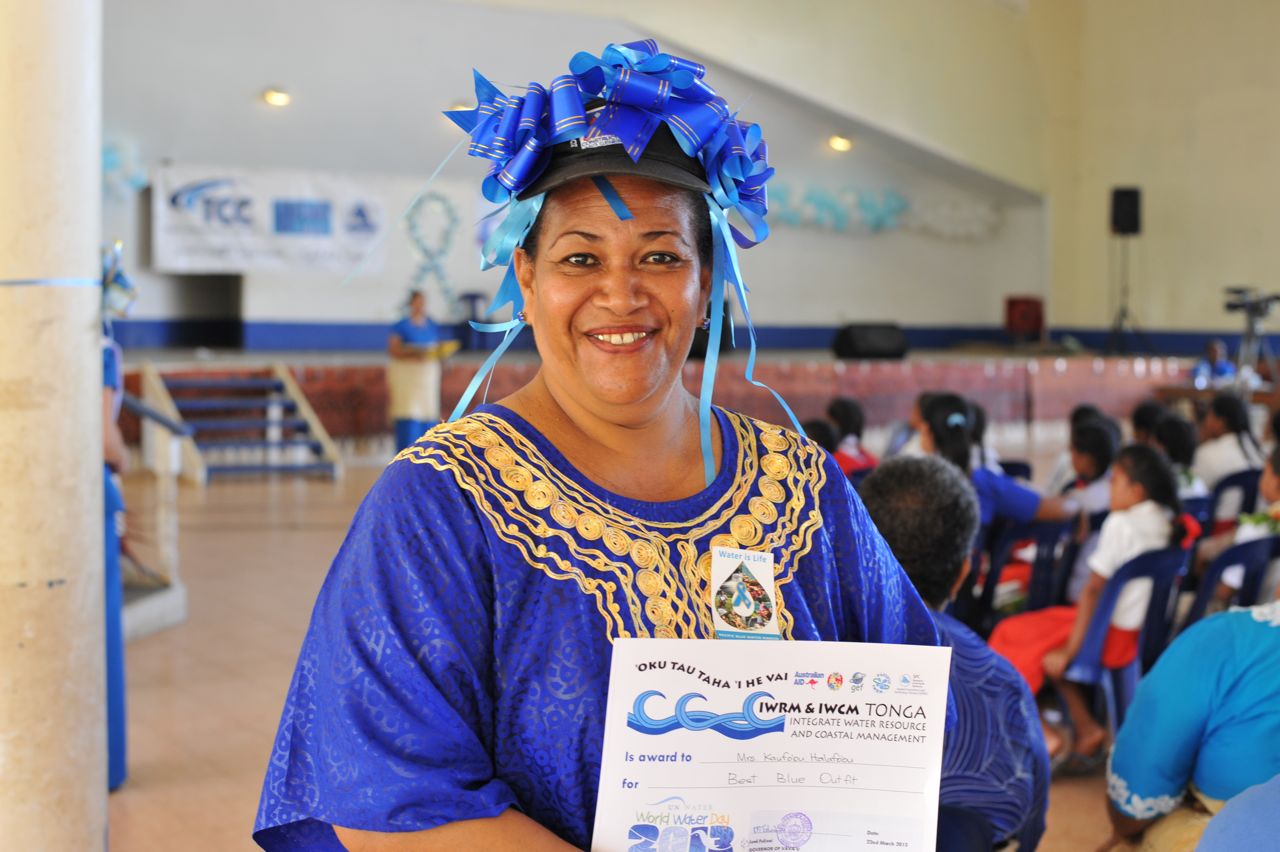  More details on this years celebrations can be found on WWD 2013 |

















